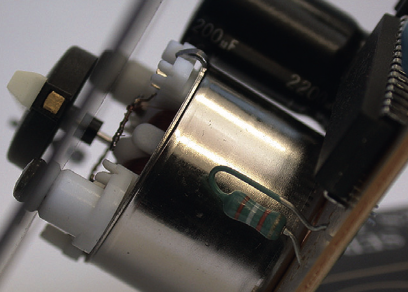Stepper motors are commonly used in various applications that require precise positioning or control over the rotation angle. In many cases, it is necessary to monitor the speed of the stepper motor to ensure that it is operating within a specific range or to provide feedback to a control system. This is where a stepper motor tachometer comes into play.
A stepper motor tachometer is a device that measures the speed of a stepper motor. It works by measuring the number of steps taken by the motor over a period of time and then calculating the speed based on the step count. This information can then be used to control the motor or provide feedback to a control system.
There are several types of stepper motor tachometers available, including optical, magnetic, and acoustic. Optical tachometers use a light source and a photodetector to measure the speed of the motor. Magnetic tachometers use a magnet and a Hall effect sensor to detect the rotation of the motor. Acoustic tachometers use sound waves to measure the speed of the motor.

One of the advantages of using a stepper motor tachometer is that it provides accurate and reliable feedback on the motor’s speed. This is particularly important in applications that require precise control over the motor’s speed, such as in robotics or CNC machines.
Another advantage of stepper motor tachometers is that they are relatively easy to install and use. Many tachometers can be simply attached to the motor shaft, and the speed can be read off a display or sent to a control system.
However, there are also some limitations to using stepper motor tachometers. For example, they may not be suitable for very high-speed applications, as the measurement process may not be able to keep up with the motor’s rotation. Additionally, some types of tachometers may be affected by external factors such as magnetic fields or ambient light, which can affect their accuracy.
Overall, stepper motor tachometers are a useful tool for monitoring the speed of stepper motors in a wide range of applications. They provide accurate and reliable feedback on the motor’s speed, which can be used to control the motor or provide feedback to a control system. While there are some limitations to using tachometers, they remain an important tool in many industries where precise motor control is necessary.
As mentioned earlier, stepper motor tachometers measure the speed of a stepper motor by counting the number of steps taken by the motor over a period of time. The speed of the motor is then calculated based on the step count and the time elapsed.
The method of counting the steps can vary depending on the type of tachometer used. Optical tachometers use a light source and a photodetector to count the number of times a rotating disk with slots passes between the light source and the detector. As the motor rotates, the disk rotates with it, and the photodetector detects the slots passing by. This creates a series of pulses that can be counted to determine the number of steps taken by the motor.
Magnetic tachometers use a magnet and a Hall effect sensor to detect the rotation of the motor. A small magnet is attached to the motor shaft, and as it rotates, the magnet passes by the Hall effect sensor, which generates a voltage pulse. These pulses can be counted to determine the number of steps taken by the motor.
Acoustic tachometers work by emitting a sound wave and measuring the time it takes for the wave to bounce back. The time delay is used to calculate the distance traveled by the sound wave, which corresponds to the distance traveled by the motor. By measuring the distance traveled over a period of time, the speed of the motor can be calculated.

Once the number of steps taken by the motor is determined, the speed can be calculated by dividing the step count by the time elapsed. This provides an accurate measurement of the motor’s speed, which can be used to control the motor or provide feedback to a control system.
One important consideration when using a stepper motor tachometer is the resolution of the device. The resolution refers to the smallest change in speed that the tachometer can detect. A higher resolution tachometer will provide more accurate measurements of the motor’s speed, which is particularly important in applications where precise control is necessary.
In summary, stepper motor tachometers provide an important tool for measuring the speed of stepper motors in a wide range of applications. The method of counting the steps can vary depending on the type of tachometer used, and the resolution of the device is an important consideration when selecting a tachometer for a specific application. Overall, tachometers provide accurate and reliable feedback on the speed of stepper motors, which is essential for precise motor control and feedback.




